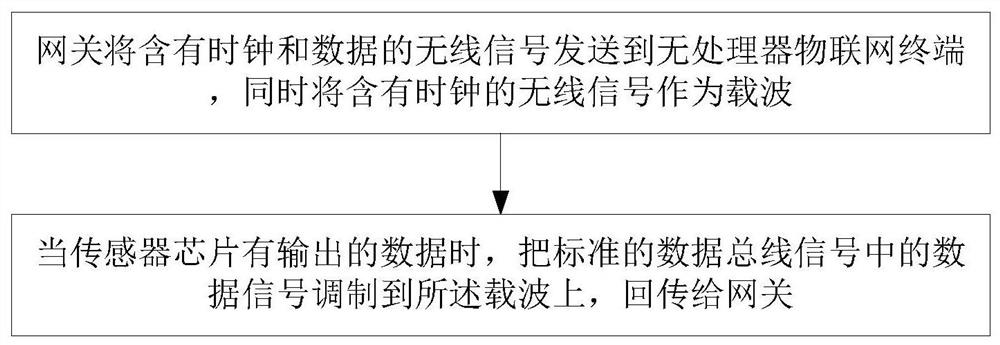Wireless bus communication method based on backscattering
A technology of backscattering and bus communication, applied in the direction of transmission modification based on link quality, bus network, adjustment of transmission mode, etc., can solve the problem of high power consumption and achieve the effect of reducing communication power consumption
- Summary
- Abstract
- Description
- Claims
- Application Information
AI Technical Summary
Problems solved by technology
Method used
Image
Examples
Embodiment
[0018] Generally speaking, a standard computer bus may include an SPI bus and an IIC bus, etc. In this embodiment, the SPI bus is used as an example for illustration.
[0019] The backscattering method proposed in this embodiment is essentially a communication method that does not actively generate electromagnetic waves. It is different from the traditional backscattering that is aimed at the baseband signal that has been coded and modulated. This method directly targets the bus signal. to scatter. The problem that needs to be solved for the backscattering of the bus signal is: the bus signal is two signals containing clock and data, but the backscattering is to reflect one baseband signal, that is to say, the backscattering of one line needs to transmit two lines of signals. bus signal.
[0020] In order to solve this problem, the strategy adopted in this embodiment is to directly transmit the bus data by backscattering, and the bus clock is modulated into the wireless signa...
PUM
 Login to View More
Login to View More Abstract
Description
Claims
Application Information
 Login to View More
Login to View More - R&D
- Intellectual Property
- Life Sciences
- Materials
- Tech Scout
- Unparalleled Data Quality
- Higher Quality Content
- 60% Fewer Hallucinations
Browse by: Latest US Patents, China's latest patents, Technical Efficacy Thesaurus, Application Domain, Technology Topic, Popular Technical Reports.
© 2025 PatSnap. All rights reserved.Legal|Privacy policy|Modern Slavery Act Transparency Statement|Sitemap|About US| Contact US: help@patsnap.com

